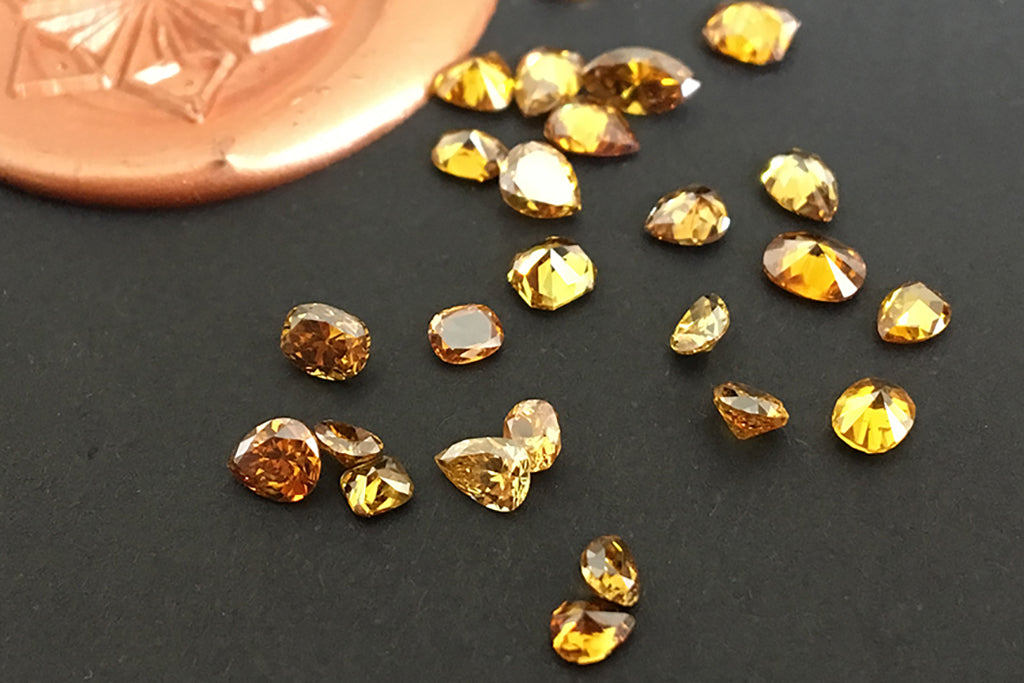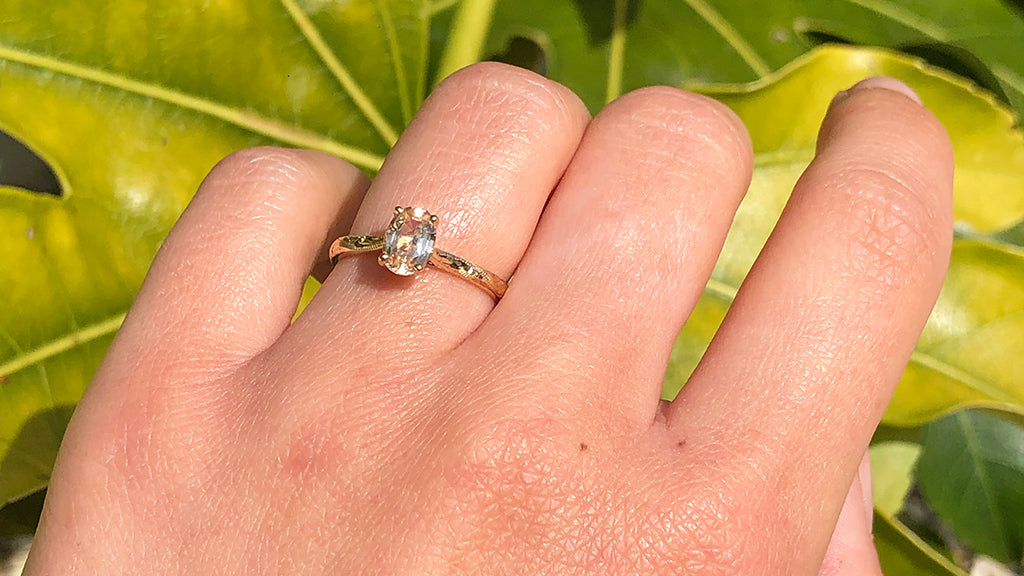Your Cart is Empty
 Chris' bespoke trilogy engagement ring, set with a 0.85ct round brilliant-cut Canadamark diamond and two pear-cut champagne diamonds
Chris' bespoke trilogy engagement ring, set with a 0.85ct round brilliant-cut Canadamark diamond and two pear-cut champagne diamondsDoing exactly as it says on the tin, a champagne diamond is a fancy coloured diamond whose natural colour resembles that of champagne. Although always brown and with a noticeable yellow tint, champagne diamonds range in hue from pale taupe to darker shades of tan and coffee. When orange shades exist instead of yellow undertones, diamonds at the darker end of the brown spectrum are often referred to as cognac diamonds instead.
Champagne diamonds gain their brown-yellow hues from traces of nitrogen trapped within the crystal structure during diamond formation. The higher the nitrogen content, the deeper the intensity of brown.

You’d be forgiven for assuming that champagne diamonds, like other natural fancy coloured diamonds, are much rarer and more expensive than their colourless counterparts. In fact, diamonds in brown hues are easier to come by than any other natural shades, including the ‘white’ diamond. Whilst only 1% of all mined diamonds are graded as completely colourless, making them almost as rare as diamonds in vivid fancy shades of yellow or pink, for example, the trace elements that lend themselves to brown hues are very common.
It’s for this reason that brown diamonds were once deemed ‘flawed’ and undesirable, as per the 4 Cs grading system which values diamonds based on their cut, colour, clarity and carat weight. In fact, brown diamonds were typically considered only good for industrial use until the 1980s.
Then, when an abundance of brown diamonds began to appear at the Argyle Mines of Western Australia, lightbulbs were illuminated above the heads of savvy jewellery industry players, who drove the ‘rebrand’ of brown diamonds with appealing new nicknames like ‘champagne’ and ‘cognac’.

Today, the beauty of champagne diamonds is that their availability and historically ‘undesirable’ colour and clarity ratings continue to make them cheaper than ‘colourless’ diamonds, which is not only great news for jewellery designers like us, but for jewellery shoppers open to exploring the kinds of options that offer a little more bang for buck. Likewise, champagne sapphires are relatively easy to source and offer an even more affordable alternative to champagne diamonds, particularly for those who wish to set their engagement ring with a particularly large centrepiece.
Although internally ‘flawed’ by the presence of nitrogen, champagne diamonds, just like all other diamonds, score a 10 on the Mohs Scale of Hardness, making them incredibly resilient to day-to-day wear in an engagement ring.
What’s more, the neutral earthiness of champagne diamonds makes them surprisingly easy to wear, complementary of all metal colours and a wide range of skin tones.
And with the tradition of drinking champagne on special occasions dating back to the royal courts of Europe in the early 1700s, the popping of a cork remains inherently associated with happy moments and new chapters; befitting symbolism for the jewel that will facilitate the popping of that all-important question.
